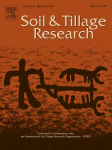Ver ítem
- xmlui.general.dspace_homeCentros Regionales y EEAsCentro Regional Buenos Aires SurEEA BalcarceArtículos científicosxmlui.ArtifactBrowser.ItemViewer.trail
- Inicio
- Centros Regionales y EEAs
- Centro Regional Buenos Aires Sur
- EEA Balcarce
- Artículos científicos
- Ver ítem
An evaluation of soil carbon models and their role on finding ways to net-zero carbon in agricultural systems
Resumen
The estimation of changes in soil organic carbon (SOC) is a key issue for national green-house gasses (GHG) inventories, climate change mitigation programs and the estimation of carbon footprint of farm products in life cycle assessments. Any strategy related to net-zero carbon in agricultural systems needs to quantify the SOC balance. In this way, SOC models help decision makers involved in agriculture to understand the dynamics of the SOC and the
[ver mas...]
The estimation of changes in soil organic carbon (SOC) is a key issue for national green-house gasses (GHG) inventories, climate change mitigation programs and the estimation of carbon footprint of farm products in life cycle assessments. Any strategy related to net-zero carbon in agricultural systems needs to quantify the SOC balance. In this way, SOC models help decision makers involved in agriculture to understand the dynamics of the SOC and the interaction between all variables related to soil, climate, land use, and management, to design the best solution to reduce emissions or enable carbon sequestration. Likewise, it is important to identify suitable models for the region. This study aims to address three main subjects: a) a discussion on the importance of SOC estimation for GHG inventories and the carbon footprint of crops, using the Intergovernmental Panel on Climate Change (IPCC) Tier 1 method and AMG model; b) an evaluation and brief description of the IPCC “Steady State Method” (SSM), using experimental data from two sites in Argentina, comparing these results to AMG and RothC models (both previously validated at those sites); and c) a brief discussion about the potential use of SOC models for what-if management scenarios, their real limitations and future research needs. The three models were consistent in predicting the impact of tillage and the long-term trends in changes in SOC stocks under different management practices. The SSM model was evaluated for the first time in Argentina and performed even better than the other two models. It was consistent with the observed values, when predicting the effect of tillage system under different crop rotations, including pasture systems. Regarding efficiencies of the models, they showed acceptable Nash-Sutcliffe Efficiency (NSE) values, and the root mean square error (RMSE) was also acceptable between 3 % and 7 %, within a range of 4–5 Mg C.ha−1. Therefore, the SSM model proved to be a valuable tool to estimate SOC trends for crop and pasture rotations under different management scenarios (i.e., tillage systems and fertilization), to identify best practices that allow for a zero or positive SOC balance, in two different soil and climate conditions of the Pampean Region of Argentina. In our study, the SSM did have a better fit to the data and, furthermore, this Tier 2 method is simpler than the Tier 3 models, and, therefore, is advantageous for conducting regional assessments and GHG inventories.
[Cerrar]

Autor
Vazquez Amabile, Gabriel;
Studdert, Guillermo;
Ogle, Stephen M.;
Beltran, Marcelo Javier;
Said, Andrés Demián;
Galbusera, Sebastián;
Montiel, Fátima Soledad;
Moreno, Rocio;
Ricard, María Florencia;
Fuente
Soil and Tillage Research 246 : 106342. (February 2025)
Fecha
2025-02
Editorial
Elsevier
ISSN
0167-1987
1879-3444
1879-3444
Formato
pdf
Tipo de documento
artículo
Palabras Claves
Derechos de acceso
Restringido
 Excepto donde se diga explicitamente, este item se publica bajo la siguiente descripción: Creative Commons Attribution-NonCommercial-ShareAlike 2.5 Unported (CC BY-NC-SA 2.5)
Excepto donde se diga explicitamente, este item se publica bajo la siguiente descripción: Creative Commons Attribution-NonCommercial-ShareAlike 2.5 Unported (CC BY-NC-SA 2.5)
Metadatos
Mostrar el registro completo del ítem
Excepto si se señala otra cosa, la licencia del ítem se describe como info:eu-repo/semantics/restrictedAccess
Ítems relacionados
Mostrando ítems relacionados por Título, autor o materia.
-
Towards a baseline for reducing the carbon budget in sugarcane: three years of carbon dioxide and methane emissions quantification
Chalco Vera, Jorge Elias; Acreche, Martin Moises (2018-11)Sugarcane straw burning or removal and N fertilization are management practices that modify the input of carbon (C) to the soil affecting greenhouse gases emissions and the potential of the soil for C sequestration. This ... -
Carbon Sequestration in Temperate Silvopastoral Systems, Argentina
Peri, Pablo Luis; Banegas, Natalia Romina; Gasparri, Néstor Ignacio; Carranza, Carlos; Rossner, Maria Belen; Martínez Pastur, Guillermo José; Cavallero, Laura; Lopez, Dardo Ruben; Loto, Dante; Fernandez, Pedro David; Powel, Priscila; Ledesma, Marcela; Pedraza, Raúl; Albanesi de Garay, Ada Susana; Bahamonde, Héctor Alejandro; Eclesia, Roxana Paola; Piñeiro, Gervasio (Springer, 2017)Silvopastoral systems (SPS) provide a wide range of non-provisioning ecosystem services including carbon (C) sequestration. Well-managed SPS outperform both grasslands/pastures and forests in terms of C by increasing soil ... -
How much carbon do Argentine Pampas Pinus radiata plantations store?
Ferrere, Paula; Lupi, Ana Maria (Instituto Nacional de Investigación y Tecnología Agraria y Alimentaria (España), 2023-04-03)Aim of study: To quantify the biomass and carbon stored in the main ecosystem components in Pinus radiata D. Don plantations across an age sequence in the Pampean region of Argentina. Area of study: Plantations were ...


